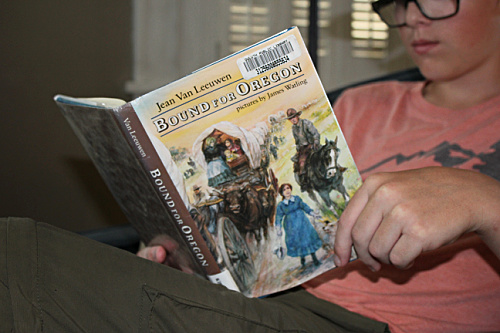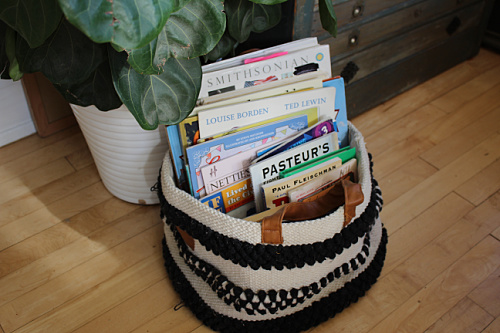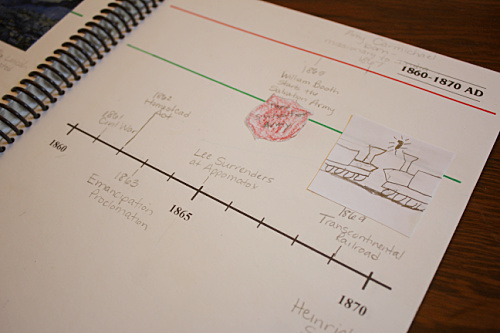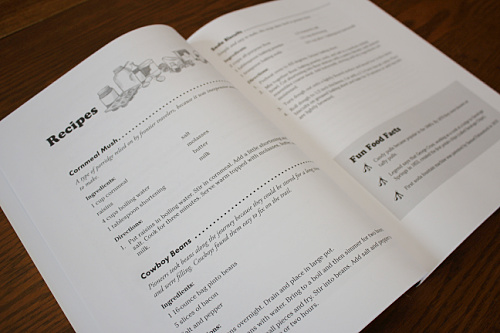In the past fifteen years of homeschooling, I've used three different phonics/grammar programs and two different spelling programs. I've started a math curriculum, switched to something else for a few years, and then switched back again. I've thrown together a hodge-podge assortment of various books, kits, and even textbooks to create an a la carte science experience. I've cobbled together many different resources for both art and Bible.
(This post contains affiliate links. Please see my disclosure policy for full details.)It's not that I'm uncommitted or easily distracted by the new and shiny. It's not that I'm discontent or even displeased. No, I'm not any of these.
I'm just eclectic.
I recognize that not every method is right for every child or even for every subject. Instead, I find value in certain aspects of each method and combine them to create a tailor-made education. I pick the best and leave the rest.
At least, that's what I've done with every subject except for one.
I've used the same history curriculum since the very beginning.
Until this year.
To be clear, I didn't switch because I was dissatisfied in any way. I wouldn't have used our previous program for so long if I thought it was lacking. Similarly, I did not switch because I'm a detractor who suddenly grew an aversion for living books. On the contrary, I think that you'll find that my love for literature has only increased over time.
I switched because I had some very specific needs and goals for curricula this year and found a resource that checked each and every one of my boxes: Learning American History Through Literature by Common Sense Press.
(Use coupon code unlikelyhomeschool at checkout to get 15% off your entire purchase from Common Sense Press, the makers of LAHTL.)
We had been using the language arts program of this Charlotte-Mason-inspired curriculum for years and have always found it to be a gentle, yet thorough approach to learning the grammar and mechanics of writing. So, when I learned that Common Sense Press was launching a brand new American History program, I felt sure we would love it.
And we do!
I needed a history curriculum that...
Moved at a steady pace
Maintained a living book approach
Didn't require me to invent any wheels
I have been planning history units for years. I can practically put them together in my sleep. But, I knew going into this year that I'd be launching my second book Holy Hygge: Creating a Place for People to Gather and the Gospel to Grow while also beginning to write my third book. I knew my time and attention would be limited. I didn't want my preoccupation to hamper our historical delight. I needed a program that included lots of unit-study-type ideas built right in so that I didn't have to expel any extra energy in the planning process.
Could accommodate a wide variety of ages
Enter Learning American History Through Literature
The guide is divided into the following units:
- Colonial Period
- Revolutionary War Period
- Westward Expansion
- Civil War Period
- Industrial Age
- World War Years
- Postwar Years
Each Unit Includes the following:
The Plot- a few paragraphs of information that you as the parent should know before presenting the time period to your kids
Things to know before purchasing
Because the program splits American history into major time periods, emphasizing the most noteworthy events, it does not contain much transitional information. It will be up to you to fill in some of the gaps by showing how the Revolutionary War rolled into Westward Expansion and how Westward Expansion overlapped the Civil War and so on. Again, this is quite typical of most Charlotte Mason-inspired curricula.
While the program can be tweaked to be appropriate for middle school and even high school, it's definitely geared toward elementary-aged kids.
How I tweaked the program to meet our needs
To ensure we would get all the way through to modern American history by the end of the year, I divided the number of weeks in our school year (36) by the number of units we needed to get through (only 5 because we studied both Colonial America and Revolutionary War history last year) for a rough total of 7. This past summer when I planned our entire school year, I carved out 7 weeks for each history unit.
As I mentioned, I'm only doing American history with my three youngest this year. But two out of the three of them are no longer in elementary school. That means that they...
- don't really want to play any of the historically accurate recess-type games listed in the guide
- don't want to make many crafts
- need deeper content
- skipped most of the games and crafts
- made more of the recipes (Food is an automatic homeschool win when you are teaching teenage boys!)
- watched more of the suggested movies
- used the helpful list of key names at the end of the unit to assign my older boys some independent reading. They each had to choose one person on the list they'd like to learn more about, read a biography about that individual, and give a report or presentation to the rest of us at the end of the unit, summarizing all they learned.
Final thoughts
Nothing will make the dusty and antiquated facts of history come alive for a child quite like living books, hands-on activities, and cultural immersion. LAHTL provides wonderful suggestions to help you incorporate all three in your homeschool!













I’m using this program for the first time this year. I enjoy the flexibility, but also struggle with the open-ended nature of the curriculum. Did you plan out daily lessons? Or weekly? Any advice on this would be appreciated!
ReplyDeleteI put together a rough sketch plan every 7 weeks (for each unit). I order all the books at once from the library, put them in order according to content, and then grab the top one from the pile each day.
DeleteThanks for sharing this! I also use TruthQuest and we love it. But I do find myself getting caught up in the minors, for sure. I ordered this one (with your code) when I saw your post and it looks like just what I need to help me with pacing! Do you still plan to use TruthQuest?
ReplyDeleteNext year, I plan to switch back but only because this is only an American History program. I'll start again with ancient history next year and cycle all the way through again in the next few years.
DeleteI ordered this one with your code I am so nervous when it comes to history. TruthQuest was my first option but I felt weary with our stage of life. I am so excited to try it
ReplyDeleteI don't think you'll be disappointed.
DeleteThank you for this review! I’m planning to use this with my special needs non reader teen. Do you have recommendations for the notebooking/lap booking you used?
ReplyDeleteIs there a printed copy we can order of the Learning American History Through Literature? Where did you get yours?
ReplyDeleteCan you recommend a reading /writing program ?
ReplyDelete